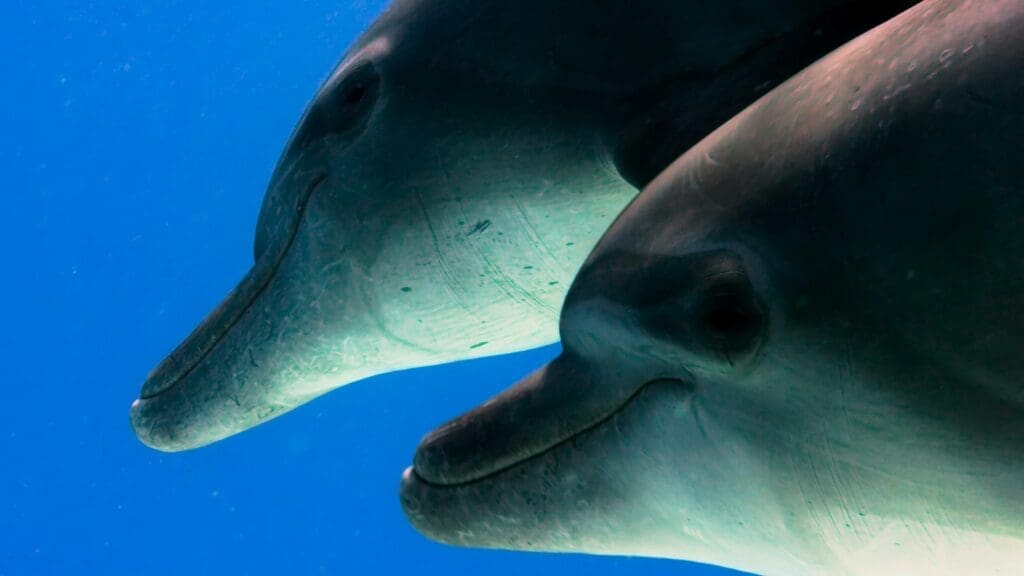
Engaging Trivia to Delight Young Minds
Dolphins are among the most fascinating and beloved marine mammals in the ocean, capturing the hearts of adults and children alike. They are widely recognized for their intelligence, playful behavior, and the awe-inspiring acrobatics they often perform above the water’s surface. With their perpetual smiles and friendly demeanor, dolphins have an uncanny ability to connect with humans, making them a subject of curiosity and admiration.
In the vast blue seas, dolphins swim with effortless grace, using their powerful tails to glide through the water. They are incredibly social creatures, usually found in groups known as pods, where they hunt, play, and communicate with each other through a series of clicks, whistles, and body movements. Their complex social structures and behaviors provide an exciting window into the lives of these amazing animals that share our planet.
Exploring dolphin facts for kids opens up a world of discovery about these intelligent marine mammals. Kids can learn about the different species of dolphins, their habitats, diets, and the unique characteristics that set them apart from other ocean inhabitants. Understanding dolphins not only captivates the young mind but also fosters an appreciation for marine life and the environment they call home.
Diving into Dolphin Basics
Before swimming with the topic of dolphins, it’s important to note that these marine mammals are a diverse group with complex behaviors and widespread habitats. They showcase fascinating physiological traits and are renowned for their intelligence and sociability.
Diverse Dolphin Species
There are 36 different species of dolphins grouped within the Cetacea order. The family Delphinidae is the largest and includes well-known species like the bottlenose dolphin and the orca, or killer whale, which is actually the largest type of dolphin. Then, there are the brackish and freshwater inhabitants—the river dolphins, which are intriguingly adapted to their environments.
Physiology and Characteristics
Dolphins are equipped with powerful tails and flippers, but their most distinctive feature might be their conical teeth used for grasping fish, their primary diet. They possess an impressive capability known as echolocation, where they emit sound waves to navigate and hunt in the ocean’s murky depths. Bottlenose dolphins are especially noted for their curved mouth, giving the appearance of a friendly smile.
Dolphin Habitats
Dolphins are found in many of the world’s oceans, from polar to tropical regions, displaying their adaptability. They live in pods, which are social groups crucial for their survival, engaging in cooperative hunting and social interactions. These groups range vastly in size, with some pods consisting of over a thousand individuals. Dolphins’ widespread presence underlines their importance in marine life and the health of ocean ecosystems.
Dolphin Behaviors and Social Structure
Dolphins are renowned for their advanced communication skills and complex social structures. Their ability to form close-knit bonds and cooperate during play and hunting showcases their social intelligence. Below, we dive into how dolphins interact within their communities and utilize sounds to connect with one another.
Communication and Sounds
Dolphins communicate through a rich array of clicks and whistles. These sounds serve multiple purposes: they are essential tools for navigation and hunting using sonar, and they facilitate social interactions among members of a pod. Each dolphin has a unique signature whistle that functions like a name, allowing other dolphins to identify them.
- Clicks: Used primarily for echolocation to detect objects and prey.
- Whistles: Serve both identification and social coordination purposes.
Through these sounds, dolphins coordinate group activities, express emotions, and even share information, demonstrating significant levels of intelligence.
Social Play and Hunting
Dolphins are highly social and are often observed engaging in playful behavior, which can involve anything from tossing seaweed to each other to riding waves. This play isn’t just for fun; it also plays a critical role in teaching young calves the skills they’ll need for survival.
When it comes to hunting, dolphins exhibit an incredible level of cooperation:
- Pods work together to herd schools of fish, making them easier to catch.
- Individuals take turns feeding while others continue to herd the prey.
This teamwork not only displays their capacity for strategic thinking but also strengthens social bonds within the group.
Dolphin Conservation and Threats
Dolphins grace the oceans with their intelligence and playfulness, but they face serious challenges that threaten their survival. Conservation efforts aim to protect these marine mammals, but understanding the specific threats they encounter is crucial for effective protection.
Environmental Challenges
Among the prime concerns for dolphin conservation is habitat loss. Coastal development and various human activities encroach on their natural environments, reducing their living space. Climate change further exacerbates the situation by altering ocean temperatures and sea levels, which can impact dolphin food sources and breeding grounds.
Another significant environmental challenge is pollution. Chemicals, plastics, and other debris not only physically harm dolphins when ingested but also degrade their habitats. For example, toxic substances like mercury can accumulate in dolphins through the food chain, leading to health issues.
Human Impact and Protection
Human activities directly contribute to the risks dolphins face. Fishing practices sometimes result in dolphins getting accidentally caught in nets, a phenomenon known as bycatch. This unintentional capture can lead to injury or death.
Various organizations and international agreements strive for dolphin protection. They work on reducing bycatch through safer fishing methods and creating protected areas where fishing is restricted. Efforts to mitigate pollution and combat climate change are also an integral part of dolphin conservation strategies.
Conservationists emphasize that protecting dolphins is not just good for these marine creatures but also benefits ocean ecosystems as a whole. As such, they are a pivotal species for the health of our oceans.
Fun Dolphin Encounters and Facts
In the vast blue expanse of the ocean, one can engage with dolphins in their natural habitat, witnessing their intelligence and friendly demeanor firsthand. This immersive experience reveals their playful spirit, especially bow-riding alongside boats, which captivates the curiosity of both kids and adults alike.
Interacting with Dolphins
One of the most extraordinary experiences at sea is swimming with dolphins. These marine mammals are known for their playful nature, often approaching humans with a sense of curiosity. Bottlenose dolphins, in particular, are famed for their friendly disposition and are commonly the species that people interact with during swim-with-dolphin activities. Scientists have observed that these encounters can range from gentle nudges to synchronized swimming, as dolphins love to showcase their agility and social behavior.
- Activities: Swimming with dolphins, diving alongside them, and enjoying their playful antics.
- For Kids: Supervised encounters offer a safe way for children to get up close with these intelligent creatures.
- Bow-riding: Dolphins often swim at the bow of boats, riding the waves created by the vessel.
Amazing Dolphin Tidbits
Dolphins are not only friendly; they are incredibly intelligent. Their capacity for complex emotions and social interactions is well-documented by scientists. Some fascinating tidbits about dolphins include their unique way of communicating with each other. For example, they are known to give each other names—a specific whistle unique to each dolphin, similar to a human name.
Dolphin Species:
- Common: The well-known Bottlenose Dolphin
- Rare: The Hector’s Dolphin, a rare sight found off the coast of New Zealand
Echolocation: Echoes guide dolphins to navigate and find food, a skill they share with bats. This natural sonar allows them to “see” with sound, painting a picture of their surroundings in their minds.
The degree of their intelligence is also shown by dolphins’ recognition of themselves in mirrors, suggesting a level of self-awareness comparable to humans and great apes. Engaging with these creatures is not just fun; it can be a profound reminder of the interconnectedness of all intelligent life.
Children tend to find dolphins particularly enchanting, likely due to their friendly, approachable behavior and the sheer joy that seems to emanate from them as they dive and play in the water. The intuitive bond between dolphins and humans is a reminder of the magic present in the natural world.




